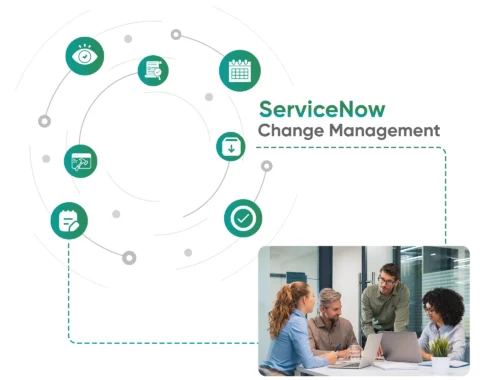With a deep understanding of the Now Platform and insights into the ServiceNow innovation pipeline, our ServiceNow architects are well-equipped to guide you in making future-proof choices for your organization.

We Help You Plan Your Architecture
When developing your architecture, instance strategy, and data strategy for the Now Platform®, it is crucial to approach them from a technical standpoint while keeping your business context and transformation objectives in mind. Your decisions regarding key architectural aspects, such as choosing between a multi-instance or single-instance approach, should be driven by relevant business factors.
Here, Aelum can help you:
- Assess the impact of business objectives/strategy on architecture requirements.
- Design your instance configuration and management strategy.
- Determine the requirements for effective integrations.
- Maintain CMDB integrity and more.
Why Aelum for Architecture Design?
Skilled for Success
Architects at Aelum offer a unique blend of technical expertise, management consulting, and professional services experience. They provide guidance on technology strategy, governance, solution design, and architecture. From developing the right technology strategy to implementing it effectively, we support you throughout the planning and execution phases.
Focused on Outcomes
Working with our ServiceNow architects means flexibility, as their engagement is customized to provide guidance in key technical focus areas that are crucial for achieving your desired outcomes. By collaborating with your platform owner, enterprise architects, and development teams, we tailor our involvement to meet your goals at each stage of your digital transformation project.
Flexible Engagement
You can either have our architects as a member of your success team, dedicating a designated amount of time per work week. Or, they can start with a minimum commitment of two business days per week, with the option to increase the hours as needed. Whichever option you choose, we ensure that you navigate the right technical path and maintain a solution aligned with established best practices.
OCM Planning
Our key focus is to minimize risks and maximize value in your ServiceNow implementations. We determine the right stakeholders for organizational change management (OCM) and develop a process and plan to facilitate smooth adaptation to new work practices. Additionally, our efforts entail effectively piloting your program and celebrating the successful go-live milestones.
Our Clients
























Frequently Asked Questions
- Step 1: Identify the client-side technical team we need to work with
- Step 2: Access business objectives and architectural requirement
- Step 3: Design and define instance configuration and management strategy
- Step 4: Determine integration requirements and design them
- Step 5: Maintain CMDB integrity
- Step 6: Develop the migration plan
- Step 7: Develop an instance maintenance plan
- Step 8: Develop an upgrade plan
- Step 9: Develop a standard process for cloning to support upgrades and other changes
- Step 10: Define guidance for the development
A flow comprises a trigger and one or multiple actions. The trigger determines the starting point of the flow, which can be based on records, schedules, or applications. For example, record-based triggers initiate a flow when a record is created, updated, or deleted.
The sequence of flow processing within ServiceNow is as follows:
- Flow Trigger: When the flow trigger conditions are met, or an API directly calls the flow, the system generates an entry in the event queue to initiate the flow.
- Scheduler Activation: The scheduler processes the event from the queue and starts executing the flow in the background.
- Process Plan Creation: The system constructs a process plan based on the flow design, outlining the necessary steps and actions to be performed.
- Process Execution: Using the record that triggered the flow, the system executes the process plan, carrying out the defined actions and operations.
- Context Record Storage: The execution details of the flow are stored in a context record, providing a record of the flow’s operation and outcomes for future reference.












































